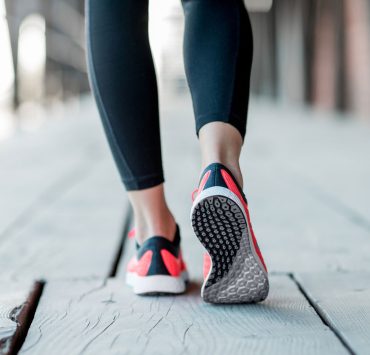What is Sciatica?
The sciatic nerve is the largest nerve in the human body, providing essential motor and sensory functions. That means the sciatic nerve not only helps power movement in the muscles of our legs and feet, but it also helps you feel sensation in your legs, transmitting key sensory information back to the brain.
Despite its singular name, the sciatic nerve is actually a bundle of five nerves originating just outside the lower spine, and traveling through the pelvis and buttocks and along the back of each thigh.
The general term “sciatica” refers to pain along the sciatic nerve, which may start in the low back and radiate through your buttocks, down one or both legs, and potentially all the way down to the toes. The most common symptom of sciatica is pain in one or both legs that gets worse when coughing, sneezing, or lifting your legs upward while lying on your back. The pain can be a deep ache, a burning sensation, an electric shock, or numbness and tingling.
Medical practitioners commonly split sciatic nerve pain into two categories—“true sciatica” and “sciatica-like conditions”—with some further breaking down the latter category into two smaller groups: “pseudo sciatica” and “false sciatica.” Understanding the differences between these conditions can help inform how massage can be most helpful in relieving it.
True Sciatica vs Pseudo-Sciatica vs False Sciatica
TRUE SCIATICA is caused by mechanical compression of the sciatic nerve root combined with an inflammatory response. This is usually the result of herniated discs in the lumbar region. Other things that may cause compression of the sciatic nerve include degenerative disc disease, spinal stenosis, osteoarthritis, spondylolisthesis, pregnancy, tumors, and more.
PSEUDO-SCIATICA is typically defined as compression of the sciatic nerve that is not spine-related. This is usually caused by inflamed or herniated muscles, and the piriformis is the most common culprit. This type of pain pattern is highly similar to true sciatica pain.
FALSE SCIATICA is characterized by pain in the sciatic nerve area with no evidence of mechanical compression of the nerve. This often turns out to be muscle pain mimicking the pain pattern of sciatica. This type of pain is usually more localized and not as diffuse as true sciatica pain.
Can Massage Help Relieve Sciatica Pain?
Yes! Regardless of your specific sciatica diagnosis, massage can help reduce sciatic pain and potentially provide near-instant relief. A massage therapist will likely try to address all types of sciatic pain in one treatment session, but if you have a specific and conclusive diagnosis, let the therapist know so that they customize the massage appropriately.
Massage for “True Sciatica”
Massage can help adjust your posture to a more neutral spinal position. This will reduce strain on the lumbar region, with the aim of releasing pressure on the sciatic nerve. Think of your spine as a lever—the more you bend forward, the greater the stress on the spinal lever originating in your lower back. In this case, a massage therapist will focus on the pecs and anterior neck to bring your head into a more neutral spinal position.
Massage is also great at reducing inflammation both locally and systemically, and since inflammation is a key ingredient in true sciatica, reducing it is critical for recovery.
Massage for “False Sciatica”
Muscles can sometimes cause “referred pain” (or “pain referrals”)—pain felt in an area seemingly disconnected from the actual pain source. In this scenario, a massage therapist can address trigger points in the muscles that cause referred pain. Common muscles that mimic sciatic pain include your quadratus lumborum (low back), gluteus medius and minimus (buttocks), the hamstring group (back of the thigh), and the piriformis (a muscle that lays horizontally across the lower region of the buttocks). Many of these muscles are already addressed in a typical Swedish or deep tissue massage, but informing the therapist about your sciatica will enable them to focus extra attention on relieving their pain and inflammation.
Massage for “Pseudo-Sciatica”
The nature of massage is to lengthen muscles and reduce the tension of muscles, which makes it ideal for treatment of pseudo sciatica. The most notorious muscle implicated in pseudo sciatica is typically the piriformis (piriformis-driven compression of the sciatic nerve is so common that there is a name for it: “piriformis syndrome”), but this compression can also be caused by smaller muscles of the buttocks, like the gamelli superior/inferior or the obturator internus, and the upper hamstring. The massage therapist will address the piriformis and other glute muscles with a targeted glute massage. This may include pin-and-stretch techniques or the “frog leg” position (bringing your knee out to the side) to allow access to the deeper gluteal muscles.
Self-Massage and Stretching Techniques for Sciatica
You can also perform self care for your sciatica symptoms by massaging and/or stretching certain muscles that can contribute to sciatic pain. Below are some ideas for self-massage, but stretching these muscles can also help.
Glutes and Piriformis (Seat)
The muscles of the seat area—particularly the piriformis—are often the culprit in both pseudo and false sciatica pain.
- Sit on the floor with your legs straight out, and place a lacrosse ball or tennis ball under the buttock where the pain is originating.
- Take the ankle from the non-affected leg and place it on the opposite knee, creating a figure 4 with your legs, and lock that ankle into a flexed position so the foot is perpendicular to the shin.
- Bend the knee on which your ankle is resting (the leg with the ball underneath it). This will open up the targeted glute, allowing access to the deeper glute muscles in addition to the superior gluteus maximus.
- You can also use a foam roller here instead of the lacrosse ball, but it won’t target the deeper glute muscles as effectively.
Quadratus Lumborum (Lower Back)
The quadratus lumborum, or “QL,” is a muscle deep in the lower back that connects the top of the pelvis, the spine, and the ribcage. When tense, inflamed, or knotted, it can cause pain that mimics the sensation of sciatic nerve pain—AKA “false sciatica.”
- Lie on the floor, and place a foam roller under your back
- Roll the full length of your back as you normally would, but when you get to the lower portion—the soft part of the back not protected by the ribs—tilt your torso about 45 degrees to one side.
- If it feels tender or tight, you can stop over the QL and wiggle back and forth lightly to release the tension, or just hold and let it release over time.
- Repeat on the other side.
Sternocleidomastoid (Neck)
The sternocleidomastoid, or “SCM,” is a muscle on the side of the neck that starts near the bottom of the ear and runs diagonally to the top of the sternum, near the base of your neck. The SCM bears most of the weight of forward head tilt, which can increase the stress on your low back and contribute to the causes of true sciatica.
- Turn your head to one side and then tilt your head forward slightly. The two thick bands that pop out on the front of your neck are your SCM muscles!
- Pinch one SCM gently between your index finger and thumb, increasing pressure as you can stand it. Work all the way up and down that muscle with repeated pinches.
- Repeat on the other side.
Other areas to foam roll:
- Hamstrings: They may be creating sciatica-like referral pain
- Erector spinae (muscles along your spine on your back) and quadriceps (front of your thigh): Tight quads can work in conjunction with tight erector spinae to cause anterior pelvic tilt and lordosis, both of which can contribute to sciatica.
- Latissimus dorsi (muscles along the sides of the torso): Tight lats can cause shoulder misplacement that may contribute to lordosis
- Pectorals (muscles of the chest): Tight pecs can cause a forward head posture, increasing pressure on your low back and contributing to true sciatica causes.
Stop Living With Sciatica Pain!
Sciatica comes in a few different forms, and massage can help all of those types of sciatica in different ways. There is no reason to live with sciatica pain. Try some self-massage or book a massage with Zeel today!
Melanie Peddle holds a MS in Mechanical Engineering and has been practicing massage since 2012. She is an instructor with Western Colorado University in its partnership with the University of Colorado, focusing on biomechanical engineering and injury, as well as applications in adaptive sports. An accomplished collegiate athlete, Melanie brings an engineer's mind to all her physiological pursuits, and a passion for the most interesting engineering challenge of all: the human body.







